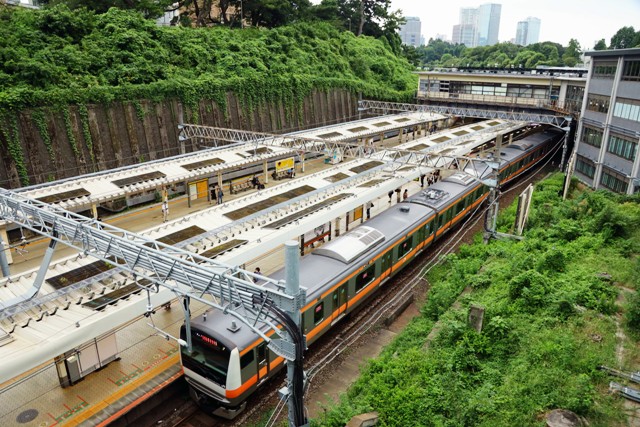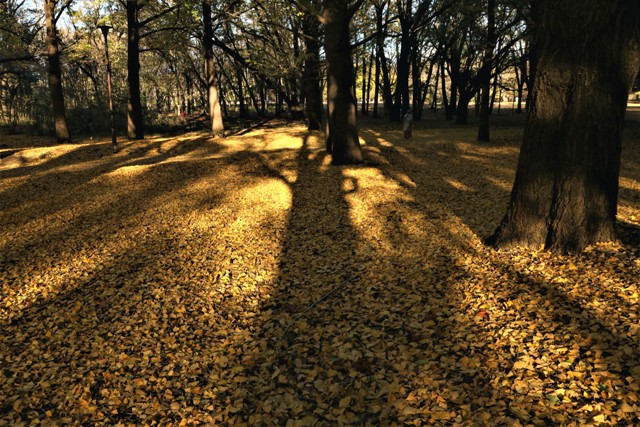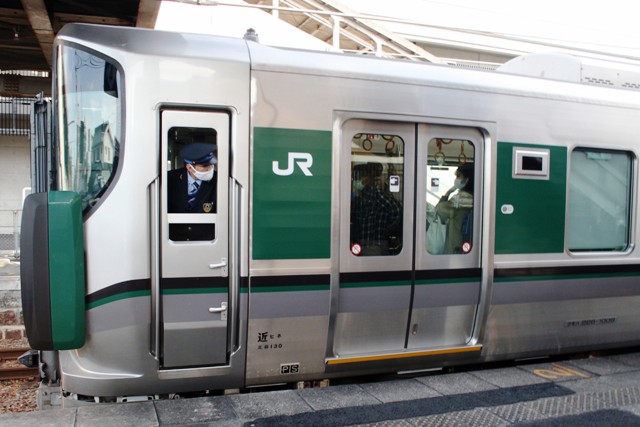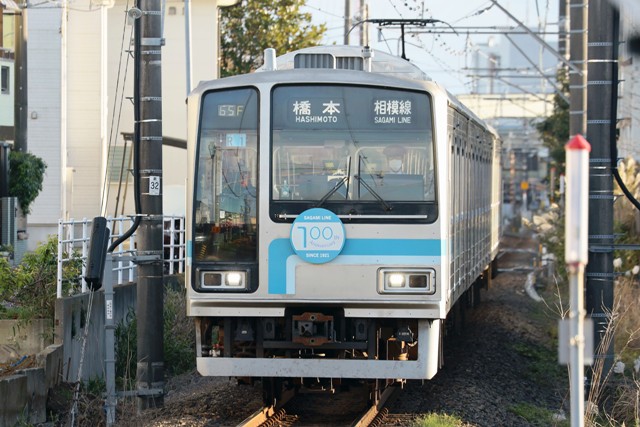Let me continue where I left off my last post.
I'm going to introduce the rolling stock on the Ryutetsu Nagareyama line in more detail. The EMU 5000 series is the sole model operated on the line. It's the ex-Seibu New 101 series, and moved to Ryutetsu in 2010. Five sets in total belong to Nagareyama Rail Yard. Each set has a different base color. They are pink (set 5001, "Sakura"), orange (set 5002, "Ryusei"), red (set 5003, "Akagi"), light-green (set 5004, "Wakaba") and yellow (set 5005, "Nanohana"). One set is composed of two 20 meters-long motorcars. They are Class KuMoHa 5000 and KuMoHa 5100. Class KuMoHa 5000 has two pantographs and rheostatic controllers; meanwhile, Class KuMoHa 5100 has a motor generator and a compressor. Each car has four 150 kW DC motors. All sets have been modified to meet a driver-only operation, as conductors are not on board on Nagareyama line trains.
In the meantime, I found a mixed-colored train by chance. It's a combination of a red car (KuMoHa 5003) and a yellow car (KuMoHa 5105). According to several rail fans' sites, KuMoHa 5005 of the set 5005, "Nanohana", broke down during operation on November 22nd this year. The combination of the red and the yellow car may be a temporary solution to cope with the car trouble. Although it's a cursed nuisance for Ryutetsu railway engineers, I was happy to see this kind of rare train as a trainspotter. Trainspotters are troublesome creatures.

























